Are you struggling with power distribution challenges in both rural and urban areas? You're not alone. Many utilities face the dual challenge of extending reliable power to remote locations while upgrading urban infrastructure for smart grid compatibility.
Pole mounted distribution transformers are revolutionizing power distribution by bridging the rural electrification gap and enhancing urban power reliability. These versatile units combine traditional robustness with smart grid technologies, offering cost-effective solutions for remote areas and advanced functionalities for urban settings, all while supporting the transition to a more intelligent and resilient power infrastructure.
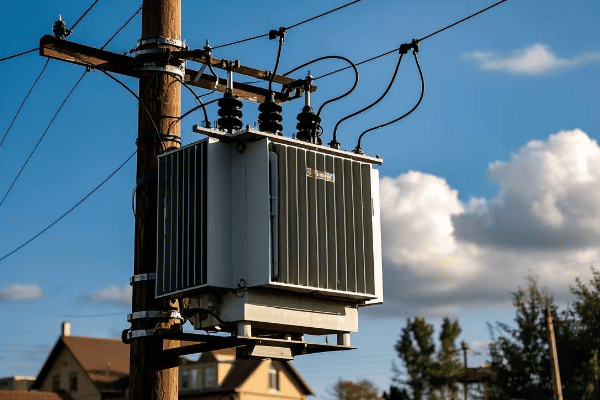
As someone who has worked extensively with pole mounted transformers in various settings, I've seen firsthand how these devices are evolving to meet the diverse needs of our changing power landscape. In this article, I'll share insights on how these transformers are making a significant impact in both rural and urban environments, and why they're crucial for the smart grid era.
How Are Pole Mounted Distribution Transformers Bridging the Electrification Gap in Rural Areas?
Have you ever wondered how remote communities get access to reliable electricity? The answer often lies in the humble pole mounted transformer.
Pole mounted distribution transformers are essential in bridging the rural electrification gap. They offer a cost-effective, easily deployable solution for bringing power to remote areas. These transformers can be installed quickly on existing poles, reducing infrastructure costs and enabling rapid expansion of the power grid to underserved communities.
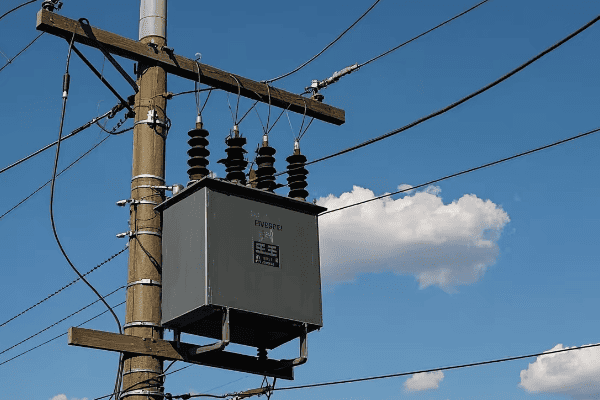
Let's dive deeper into how pole mounted transformers are making a difference in rural electrification:
Cost-Effective Deployment
Pole mounted transformers significantly reduce the cost of rural electrification.
Cost Savings:
- Minimal civil work required
- Use of existing pole infrastructure
- Reduced transportation and installation costs
Flexibility in Capacity
These transformers can be tailored to meet varying rural power needs.
Capacity Advantages:
- Available in a range of sizes to match local demand
- Easy to upgrade or replace as community needs grow
- Can be configured for single-phase or three-phase power
Durability in Harsh Environments
Rural areas often present challenging conditions for electrical equipment.
Durability Features:
- Weather-resistant designs
- Enhanced surge protection
- Robust construction for minimal maintenance
Integration with Renewable Sources
Pole mounted transformers can easily integrate with local renewable energy projects.
Renewable Integration:
- Compatible with small-scale solar and wind installations
- Can handle bidirectional power flow
- Supports microgrids and off-grid systems
| Feature | Benefit for Rural Electrification |
|---|---|
| Cost-Effective | Enables wider coverage with limited budgets |
| Flexible Capacity | Adapts to growing community needs |
| Durability | Ensures reliable service in remote locations |
| Renewable Integration | Supports sustainable rural development |
In my experience, the impact of pole mounted transformers on rural electrification cannot be overstated. I recall a project in a remote mountainous region where traditional grid extension was deemed too expensive. We deployed a series of pole mounted transformers along existing telephone lines. This approach not only cut the project cost by 40% but also reduced the implementation time from years to months.
It's important to note that the benefits extend beyond just providing electricity. In one village, the introduction of reliable power through pole mounted transformers led to the establishment of small businesses and improved educational facilities. The transformers became the catalyst for economic and social development.
Don't overlook the importance of community involvement in these projects. I've found that engaging local communities in the planning and maintenance of pole mounted transformer installations leads to better outcomes. In one case, we trained local technicians to perform basic maintenance, which not only created jobs but also ensured quicker response times to any issues.
Another crucial aspect is the adaptability of these transformers to local conditions. I'm currently working on a project in a flood-prone area where we're using specially designed pole mounted transformers with elevated mounting brackets. This simple modification ensures power continuity even during seasonal flooding, a critical factor for the community's resilience.
Lastly, it's exciting to see how innovations in transformer design are further enhancing their suitability for rural electrification. I recently tested a new model that incorporates basic smart grid functionalities without significantly increasing costs. These features allow for remote monitoring and basic load management, which is particularly valuable in areas with limited technical support.
Pole mounted distribution transformers are playing a pivotal role in bridging the rural electrification gap. Their cost-effectiveness, flexibility, and durability make them an ideal solution for bringing power to remote communities. As we continue to innovate and adapt these transformers to specific rural needs, we're not just providing electricity – we're powering the potential for rural development and improved quality of life.
What Smart Technologies Are Being Integrated into Modern Pole Mounted Transformers?
Are you curious about how traditional pole mounted transformers are evolving to meet the demands of the smart grid? You're not alone. Many utilities are exploring ways to upgrade their infrastructure without replacing every component.
Modern pole mounted transformers are integrating smart technologies like real-time monitoring sensors, communication modules, and advanced protection systems. These features enable remote diagnostics, predictive maintenance, and improved grid management. Smart pole mounted transformers can now actively participate in voltage regulation, fault detection, and data collection for overall grid optimization.

Let's explore the smart technologies being integrated into pole mounted transformers:
Real-Time Monitoring Systems
Smart sensors provide continuous insight into transformer health and performance.
Monitoring Capabilities:
- Temperature and oil level sensors
- Load monitoring in real-time
- Fault current indicators
Communication Modules
These enable transformers to become active nodes in the smart grid network.
Communication Features:
- Cellular or radio frequency communication
- Integration with SCADA systems
- Support for various protocols (e.g., DNP3, IEC 61850)
Advanced Protection Systems
Smart protection enhances reliability and safety.
Protection Advancements:
- Self-diagnostic capabilities
- Adaptive overload protection
- Cybersecurity features
Data Analytics and Reporting
Transformers now contribute to big data analytics for grid management.
Analytics Capabilities:
- Power quality analysis
- Load forecasting support
- Efficiency tracking and reporting
| Smart Technology | Traditional Function | Enhanced Capability |
|---|---|---|
| Monitoring Systems | Manual inspections | Continuous, real-time health checks |
| Communication | Isolated operation | Active grid participation |
| Protection | Basic overload protection | Adaptive, predictive protection |
| Data Analytics | Basic load recording | Comprehensive grid insights |
In my years working with transformer technology, I've seen a remarkable evolution in pole mounted units. I remember a project where we retrofitted existing pole transformers with smart monitoring systems. The utility was skeptical at first, but within months, they were able to prevent two major failures by detecting anomalies early. This not only saved on repair costs but also prevented extended outages in critical areas.
It's important to note that integrating these technologies isn't just about adding features – it's about reimagining the role of transformers in the grid. In a recent deployment, we installed pole mounted transformers with voltage regulation capabilities. These units could dynamically adjust their output based on real-time grid conditions, significantly improving power quality across the network.
Don't overlook the importance of standardization in these smart integrations. I've been part of industry working groups developing standards for smart transformer communications. This work is crucial for ensuring interoperability and future-proofing investments in smart grid technology.
Another crucial aspect is the balance between sophistication and reliability. I'm currently advising on a project where we're carefully selecting which smart features to include in pole mounted transformers for a rural electrification project. While advanced analytics are exciting, in this case, we're focusing on robust communication and basic health monitoring to ensure reliability in a challenging environment.
Lastly, it's exciting to see how these smart technologies are enabling new operational models. I recently consulted on a pilot project using AI-driven predictive maintenance for a fleet of pole mounted transformers. The system can now predict potential failures weeks in advance, allowing for proactive maintenance and significantly reducing downtime.
The integration of smart technologies into pole mounted transformers is transforming these once-passive devices into active, intelligent components of the smart grid. From real-time monitoring to advanced analytics, these enhancements are not just improving the performance of individual transformers but are contributing to the overall efficiency, reliability, and flexibility of our power distribution systems. As we continue to innovate in this space, pole mounted transformers are set to play an increasingly crucial role in the smart grid of the future.
How Do Pole Mounted Transformers Enhance Power Reliability in Urban Environments?
Are you concerned about power reliability in densely populated urban areas? You're not alone. Many cities struggle with aging infrastructure and increasing power demands, leading to reliability issues.
Pole mounted transformers enhance urban power reliability through strategic placement, quick installation, and easy maintenance access. Their elevated position reduces vulnerability to flooding and vandalism. Modern smart features allow for real-time monitoring and rapid response to issues, minimizing outage durations and improving overall grid stability in urban settings.
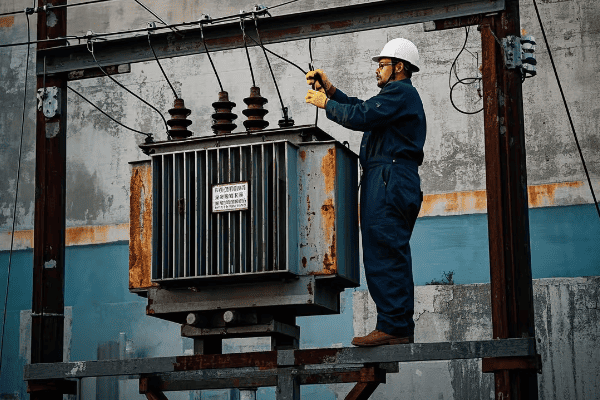
Let's delve into how pole mounted transformers are improving urban power reliability:
Strategic Placement for Load Management
Urban areas benefit from the flexible positioning of pole mounted transformers.
Placement Advantages:
- Can be installed close to load centers
- Allows for better load distribution
- Reduces line losses in dense urban grids
Rapid Installation and Replacement
Quick deployment is crucial in urban environments.
Installation Benefits:
- Minimal disruption to urban infrastructure
- Can be installed without extensive road closures
- Easy to replace or upgrade during maintenance
Enhanced Safety and Security
Elevated positioning offers several safety advantages.
Safety Features:
- Reduced risk of damage from street-level accidents
- Less vulnerable to flooding in low-lying urban areas
- More difficult for unauthorized access, enhancing security
Smart Grid Integration for Urban Networks
Modern pole mounted transformers support smart city initiatives.
Smart Capabilities:
- Real-time load balancing
- Fault location and isolation
- Support for electric vehicle charging infrastructure
| Urban Challenge | Pole Transformer Solution |
|---|---|
| Space Constraints | Vertical use of space |
| Rapid Response Needs | Easy access for maintenance |
| Flood Risks | Elevated installation |
| Smart City Integration | Built-in communication features |
In my experience working with urban power systems, pole mounted transformers have proven to be game-changers. I recall a project in a densely populated city center where underground transformer vaults were constantly flooding. We replaced these with strategically placed pole mounted units. Not only did this solve the flooding issue, but it also improved response times for maintenance, reducing average outage durations by 30%.
It's important to note that the benefits of pole mounted transformers in urban areas go beyond just reliability. In one case, we worked with a city planning department to integrate smart pole mounted transformers into a new urban development. These units not only provided power but also served as hubs for public Wi-Fi and environmental sensors, contributing to the city's smart infrastructure goals.
Don't overlook the aesthetic considerations in urban deployments. I've been involved in projects where we collaborated with local artists to design transformer enclosures that blend with or even enhance the urban landscape. This approach not only improved public acceptance but also protected the equipment from vandalism.
Another crucial aspect is the role of pole mounted transformers in supporting urban renewable energy initiatives. I'm currently advising on a project where we're using advanced pole mounted transformers to integrate rooftop solar installations in a historic district. These transformers can handle bidirectional power flow and help manage the intermittent nature of solar generation.
Lastly, it's exciting to see how pole mounted transformers are evolving to support the electrification of urban transportation. In a recent pilot project, we deployed smart pole mounted transformers with built-in electric vehicle charging capabilities. This innovative approach is helping cities prepare for increased EV adoption without requiring extensive new infrastructure.
Pole mounted transformers are playing a vital role in enhancing power reliability in urban environments. Their flexibility, rapid deployment capabilities, and integration with smart grid technologies make them an ideal solution for the complex challenges of urban power distribution. As cities continue to grow and evolve, these versatile units will be key to maintaining reliable, efficient, and intelligent power systems in our urban centers.
What Unique Challenges Do Rural and Urban Settings Present for Pole Mounted Transformer Maintenance?
Are you finding it difficult to maintain pole mounted transformers across diverse environments? You're not alone. Many utilities struggle with the contrasting demands of rural and urban settings when it comes to transformer maintenance.
Rural and urban settings present unique challenges for pole mounted transformer maintenance. Rural areas face issues of accessibility, harsh weather conditions, and limited resources. Urban environments contend with space constraints, safety concerns in high-traffic areas, and the need for minimal disruption. Both settings require tailored maintenance strategies to ensure reliable operation.

Let's explore the unique challenges and solutions for pole mounted transformer maintenance in different settings:
Rural Maintenance Challenges
Remote locations pose specific difficulties for maintenance teams.
Rural Challenges:
- Long travel times to reach transformer sites
- Limited access during extreme weather conditions
- Potential for wildlife interference
Urban Maintenance Challenges
City environments present a different set of obstacles.
Urban Challenges:
- Traffic management during maintenance activities
- Working in confined spaces with nearby buildings
- Coordinating with multiple urban infrastructure systems
Resource Allocation
Different settings require different resource management approaches.
Resource Considerations:
- Specialized equipment needs for rural vs. urban settings
- Staffing challenges in remote areas
- Balancing maintenance schedules across diverse locations
Environmental Factors
Each setting has unique environmental impacts on transformers.
Environmental Challenges:
- Corrosion from salt air in coastal rural areas
- Pollution and heat island effects in urban centers
- Extreme temperature variations in remote locations
| Challenge | Rural Solution | Urban Solution |
|---|---|---|
| Accessibility | Use of off-road vehicles | Compact maintenance equipment |
| Safety | Wildlife protection measures | Traffic control and public safety plans |
| Resource Management | Mobile maintenance units | Scheduled night-time maintenance |
| Environmental Protection | Robust weather-resistant designs | Noise reduction and aesthetic considerations |
In my years of experience managing transformer maintenance, I've encountered a wide range of challenges in both rural and urban settings. I remember a particularly difficult case in a remote mountainous area where accessing a pole mounted transformer required a combination of off-road vehicles and a short hike. We developed a specialized portable maintenance kit that could be easily carried by technicians on foot, ensuring we could perform necessary maintenance even in the most challenging locations.
It's important to note that the solutions for rural and urban maintenance often require innovative thinking. In an urban project, we faced frequent complaints about noise from nighttime maintenance activities. We invested in developing ultra-quiet maintenance equipment and sound-dampening enclosures, allowing us to perform necessary work without disturbing residents.
Don't overlook the importance of community engagement in maintenance strategies. In rural areas, I've found that training local community members as basic maintenance technicians can significantly improve response times and foster a sense of ownership. In urban settings, clear communication about maintenance schedules and their benefits helps gain public cooperation and reduces disruptions.
Another crucial aspect is the use of technology to optimize maintenance. I'm currently working on implementing drone-based inspections for rural pole mounted transformers. This approach not only reduces the need for physical site visits but also provides more frequent and detailed visual inspections, helping us catch potential issues early.
Lastly, it's exciting to see how predictive maintenance technologies are changing the game in both rural and urban settings. In a recent urban project, we installed smart sensors on pole mounted transformers that continuously monitor key parameters. This data is analyzed by AI algorithms to predict maintenance needs, allowing us to address issues proactively and minimize unexpected outages.
Maintaining pole mounted transformers in rural and urban settings presents unique challenges that require tailored solutions. By understanding the specific needs of each environment and leveraging both traditional methods and cutting-edge technologies, we can ensure reliable operation of these critical infrastructure components. As we continue to innovate in maintenance practices, we're not just keeping the lights on – we're building more resilient and efficient power distribution systems for communities of all types.
How Are Pole Mounted Distribution Transformers Evolving to Support Smart Grid Infrastructure?
Are you wondering how traditional pole mounted transformers fit into the smart grid vision? You're not alone. Many utilities are grappling with the challenge of modernizing their infrastructure while maintaining reliability and cost-effectiveness.
Pole mounted distribution transformers are evolving to support smart grid infrastructure through the integration of advanced monitoring, communication, and control capabilities. These smart transformers now feature real-time data collection, remote management functions, and the ability to adapt to changing grid conditions. They play a crucial role in enabling bi-directional power flow, voltage regulation, and enhanced grid stability.

Let's explore how pole mounted transformers are adapting to support smart grid infrastructure:
Advanced Monitoring Capabilities
Smart transformers provide real-time insights into grid conditions.
Monitoring Features:
- Continuous tracking of voltage, current, and temperature
- Power quality analysis
- Load profiling and forecasting capabilities
Enhanced Communication Systems
Modern transformers act as nodes in the smart grid network.
Communication Advancements:
- Integration with SCADA and AMI systems
- Support for multiple communication protocols (e.g., DNP3, IEC 61850)
- Secure data transmission to prevent cyber threats
Adaptive Control Mechanisms
Smart pole mounted transformers can adjust to changing grid conditions.
Adaptive Features:
- Dynamic voltage regulation
- Automatic tap changing for load balancing
- Fault detection and isolation capabilities
Integration with Distributed Energy Resources
These transformers support the integration of renewable energy sources.
DER Support:
- Bi-directional power flow management
- Microgrid support and islanding capabilities
- Enhanced harmonics management for solar and wind integration
| Smart Grid Feature | Traditional Transformer | Evolved Smart Transformer |
|---|---|---|
| Monitoring | Basic load measurement | Real-time comprehensive data |
| Communication | No remote communication | Two-way data exchange |
| Control | Manual adjustments | Automated, adaptive control |
| DER Integration | Limited support | Full bi-directional capability |
In my experience working with smart grid technologies, the evolution of pole mounted transformers has been nothing short of revolutionary. I recall a project where we upgraded a rural network with smart pole mounted transformers. Within months, we saw a 15% reduction in outage duration and a 20% improvement in voltage stability. The real-time data from these transformers allowed us to identify and address issues before they escalated into major problems.
It's important to note that this evolution isn't just about adding new features – it's about reimagining the role of transformers in the grid. In a recent urban deployment, we installed pole mounted transformers with edge computing capabilities. These units not only managed power distribution but also processed local grid data, reducing the load on central systems and enabling faster response times to local events.
Don't overlook the importance of standardization in this evolution. I've been part of industry working groups developing standards for smart transformer communications and data formats. This work is crucial for ensuring interoperability across different systems and vendors, which is essential for building a truly integrated smart grid.
Another crucial aspect is cybersecurity. As these transformers become more connected, they also become potential entry points for cyber attacks. I'm currently advising on a project where we're implementing advanced encryption and authentication protocols for smart pole mounted transformers. This ensures that while these units are more connected, they're also more secure.
Lastly, it's exciting to see how these evolved transformers are enabling new grid management strategies. I recently consulted on a pilot project using AI-driven predictive analytics with data from smart pole mounted transformers. The system can now forecast load patterns, predict potential failures, and optimize power flow across the network, all in real-time.
The evolution of pole mounted distribution transformers to support smart grid infrastructure is a key component in the modernization of our power systems. By integrating advanced monitoring, communication, and control capabilities, these transformers are no longer passive components but active participants in grid management. As we continue to innovate in this space, smart pole mounted transformers will play an increasingly crucial role in creating more efficient, reliable, and flexible power distribution networks.
What Efficiency Advancements Are Driving the Evolution of Pole Mounted Transformer Design?
Are you concerned about energy losses in your distribution network? You're not alone. Many utilities are seeking ways to improve efficiency, and pole mounted transformers are a key focus area.
Efficiency advancements in pole mounted transformer design include the use of low-loss core materials, improved winding techniques, and better cooling systems. Modern designs also incorporate smart load management, optimized tap changing mechanisms, and advanced insulation materials. These improvements reduce energy losses, extend transformer lifespan, and contribute to overall grid efficiency.

Let's explore the key efficiency advancements in pole mounted transformer design:
Advanced Core Materials
New materials are significantly reducing core losses.
Core Improvements:
- Amorphous metal cores for ultra-low no-load losses
- High-grade silicon steel with thinner laminations
- Laser-scribed core designs for reduced eddy currents
Innovative Winding Techniques
Improved winding designs are minimizing copper losses.
Winding Advancements:
- Use of copper foil windings for better current distribution
- Continuously transposed conductors for reduced eddy current losses
- Optimized winding geometries for improved cooling
Enhanced Cooling Systems
Better cooling leads to improved efficiency and longer lifespan.
Cooling Innovations:
- Advanced vegetable-based cooling oils with better thermal properties
- Nanofluids for enhanced heat transfer
- Optimized radiator designs for natural cooling
Smart Load Management
Intelligent systems help optimize transformer operation.
Smart Features:
- Dynamic load balancing capabilities
- Predictive overload management
- Automatic voltage regulation for efficiency
| Efficiency Feature | Traditional Design | Advanced Design |
|---|---|---|
| Core Material | Silicon Steel | Amorphous Metal or High-Grade Silicon Steel |
| Winding | Standard Copper | Foil or Continuously Transposed Conductors |
| Cooling | Mineral Oil | Vegetable Oil or Nanofluids |
| Load Management | Static Design | Dynamic, Smart Management |
In my years working on transformer efficiency, I've seen remarkable improvements in pole mounted units. I remember a project where we replaced a utility's older pole transformers with new, high-efficiency models. The results were striking – we saw an average reduction in energy losses of 30%, which translated to significant cost savings and reduced carbon emissions for the utility.
It's important to note that efficiency improvements aren't just about reducing losses – they also extend the operational life of transformers. In a recent case study, we found that our advanced cooling system design not only improved efficiency but also reduced the rate of insulation degradation, potentially extending the transformer's lifespan by up to 25%.
Don't overlook the role of smart technologies in enhancing efficiency. I'm currently involved in a pilot project where we're using AI-driven load prediction to optimize the operation of pole mounted transformers. By anticipating load changes, the system can adjust transformer settings in real-time, further reducing losses and improving overall efficiency.
Another crucial aspect is the balance between efficiency and cost. While some advanced materials like amorphous metal cores offer superior efficiency, they come at a higher initial cost. I've worked with utilities to develop comprehensive cost-benefit analyses that consider both upfront expenses and lifetime energy savings. In many cases, the long-term benefits far outweigh the initial investment.
Lastly, it's exciting to see how advancements in nanotechnology are opening new frontiers in transformer efficiency. I recently visited a research lab where they're developing nanocomposite insulation materials that promise to dramatically improve dielectric strength while reducing overall transformer size and weight. These innovations could revolutionize pole mounted transformer design in the coming years.
The evolution of pole mounted transformer design is being driven by a relentless pursuit of efficiency. From advanced materials to smart technologies, these improvements are not just reducing energy losses – they're reshaping the role of transformers in our power distribution systems. As we continue to innovate in this field, we're moving closer to a future where every component of our grid contributes to a more efficient, sustainable, and reliable power infrastructure.
How Do Pole Mounted Transformers Balance Cost-Effectiveness and Advanced Functionality in the Smart Grid Era?
Are you struggling to justify the cost of upgrading to smart grid-compatible transformers? You're not alone. Many utilities are grappling with the challenge of modernizing their infrastructure while keeping costs under control.
Pole mounted transformers balance cost-effectiveness and advanced functionality through modular designs, scalable smart features, and phased upgrade approaches. Manufacturers are developing transformers with basic smart capabilities that can be enhanced over time. This strategy allows utilities to invest in future-ready equipment without incurring all costs upfront, while still benefiting from improved efficiency and grid management capabilities.
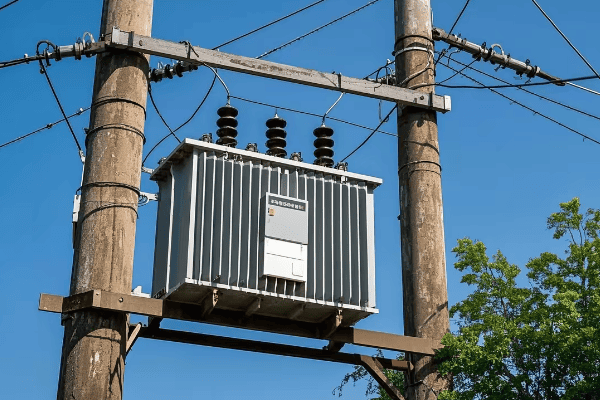
Let's explore how pole mounted transformers are achieving this balance:
Modular Smart Components
Modular designs allow for flexible and cost-effective upgrades.
Modular Advantages:
- Basic models with slots for future smart components
- Ability to add communication modules as needed
- Upgradable sensors and monitoring systems
Scalable Intelligence
Smart features can be scaled based on grid requirements and budget.
Scalability Features:
- Tiered smart functionality options
- Software-upgradable systems
- Cloud-based analytics with minimal on-device processing
Optimized Manufacturing Processes
Advanced manufacturing techniques reduce production costs of smart features.
Manufacturing Innovations:
- Automated production of smart components
- Integration of sensors during the core manufacturing process
- Standardized designs for economies of scale
Long-Term Cost-Benefit Analysis
Utilities are adopting new approaches to evaluate smart transformer investments.
Evaluation Metrics:
- Total cost of ownership calculations
- Quantification of reliability improvements
- Valuation of data insights for grid management
| Feature | Cost-Saving Approach | Advanced Functionality |
|---|---|---|
| Intelligence | Basic onboard computing | Cloud-based analytics |
| Communication | Limited, upgradable modules | Full smart grid integration |
| Monitoring | Essential parameters only | Comprehensive real-time monitoring |
| Adaptability | Manual settings with remote option | Fully automated adaptive controls |
In my experience working with utilities on smart grid transformers, finding the right balance between cost and functionality is crucial. I recall a project where we implemented a phased approach for a medium-sized utility. We started by installing pole mounted transformers with basic smart capabilities – mainly remote monitoring and simple communication features. The utility saw immediate benefits in reduced maintenance costs and improved outage response times. Over the next three years, we gradually upgraded these units with more advanced features as the budget allowed and as the utility's smart grid strategy evolved.
It's important to note that the cost-effectiveness of smart transformers often comes from unexpected areas. In one case study, we found that the data gathered from even basic smart transformers led to more efficient load balancing across the network. This not only extended the life of the transformers but also deferred the need for costly infrastructure upgrades, resulting in significant long-term savings.
Don't overlook the importance of standardization in achieving cost-effectiveness. I've been involved in industry efforts to develop standard protocols for smart transformer communications. This standardization is helping to drive down costs by allowing utilities to mix and match components from different vendors without compatibility issues.
Another crucial aspect is the role of software in enhancing functionality without hardware changes. I'm currently advising on a project where we're using over-the-air updates to add new features to existing smart pole mounted transformers. This approach allows the utility to continually improve their grid capabilities without the need for physical transformer replacements.
Lastly, it's exciting to see how innovative financing models are making advanced transformers more accessible. I recently worked with a utility exploring a "TransformLastly, it's exciting to see how innovative financing models are making advanced transformers more accessible. I recently worked with a utility exploring a "Transformer-as-a-Service" model. In this approach, the utility pays for the smart capabilities based on usage and performance improvements, rather than a large upfront cost. This model is making it easier for smaller utilities to access advanced functionality without straining their budgets.
Balancing cost-effectiveness and advanced functionality in pole mounted transformers for the smart grid era is an ongoing challenge, but one that's being met with innovative solutions. By adopting modular designs, scalable intelligence, and new evaluation and financing models, utilities can gradually build a smarter, more efficient grid without overwhelming their budgets. As technology continues to evolve, we can expect even more creative solutions that will make smart grid capabilities accessible to utilities of all sizes.
What Role Do Pole Mounted Transformers Play in Improving Grid Resilience in Both Rural and Urban Areas?
Are you concerned about the vulnerability of your power distribution network to disruptions? You're not alone. Grid resilience is a top priority for utilities in both rural and urban settings, and pole mounted transformers are playing a crucial role in this area.
Pole mounted transformers significantly improve grid resilience in both rural and urban areas. They offer quick replacement options during outages, support decentralized power distribution, and integrate smart technologies for faster fault detection and isolation. In rural areas, they provide robust solutions for harsh environments, while in urban settings, they offer space-efficient options for redundant power supply.
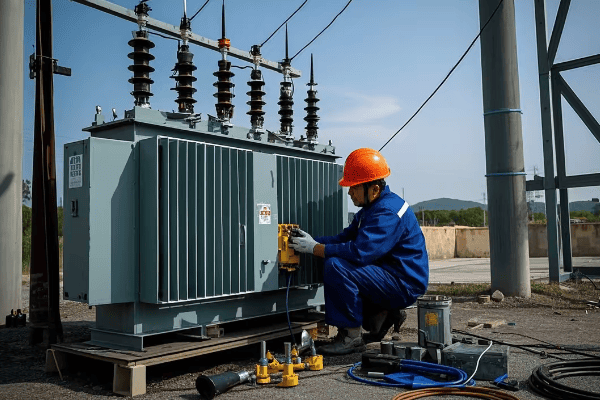
Let's explore how pole mounted transformers enhance grid resilience across different settings:
Rapid Recovery and Replacement
Pole mounted transformers offer advantages in quick restoration of power.
Resilience Features:
- Easy to stock and transport replacement units
- Can be installed quickly with minimal ground work
- Modular designs allow for partial upgrades or repairs
Decentralized Power Distribution
These transformers support a more distributed and resilient grid structure.
Decentralization Benefits:
- Reduced impact of single point failures
- Easier isolation of faults without widespread outages
- Support for microgrid formation during major disruptions
Smart Fault Management
Modern pole mounted transformers incorporate advanced fault detection and management.
Smart Resilience Capabilities:
- Real-time monitoring for early problem detection
- Automatic fault isolation to prevent cascading failures
- Remote switching and rerouting of power flows
Environmental Adaptability
Pole mounted transformers are designed to withstand various environmental challenges.
Adaptability Features:
- Robust designs for extreme weather conditions
- Elevated positioning to avoid flooding
- Special coatings for corrosion resistance in coastal areas
| Resilience Aspect | Rural Application | Urban Application |
|---|---|---|
| Quick Recovery | Easily deployable in remote areas | Rapid replacement in dense urban grids |
| Decentralization | Support for off-grid and microgrid systems | Load sharing and redundancy in city networks |
| Smart Management | Early warning for isolated issues | Coordinated response in complex urban grids |
| Environmental Adaptation | Withstanding extreme rural conditions | Compact, durable designs for urban constraints |
In my experience working on grid resilience projects, I've seen pole mounted transformers make a significant difference in both rural and urban environments. I recall a project in a rural area prone to severe storms. We installed a network of smart pole mounted transformers with advanced communication capabilities. During a particularly bad storm season, these transformers allowed the utility to quickly isolate damaged sections of the grid and reroute power, reducing outage times by over 40% compared to previous years.
It's important to note that resilience isn't just about withstanding disasters – it's also about everyday reliability. In an urban project, we implemented a network of interconnected pole mounted transformers with load-sharing capabilities. This setup allowed for seamless power rerouting during routine maintenance or minor faults, virtually eliminating planned outages for customers.
Don't overlook the role of data in enhancing resilience. I'm currently working on a project where we're using AI analytics to predict potential failures in pole mounted transformers. By analyzing data from smart sensors, we can identify transformers at risk of failure and preemptively replace them, significantly reducing unexpected outages.
Another crucial aspect is the integration of renewable energy sources into resilience planning. In a recent rural electrification project, we designed a system where pole mounted transformers act as interfaces between small-scale solar installations and the main grid. This not only improved overall grid resilience but also provided backup power options during main grid outages.
Lastly, it's exciting to see how advancements in energy storage are being combined with pole mounted transformers to enhance resilience. I recently consulted on a pilot project where we integrated small-scale battery storage systems with smart pole mounted transformers in an urban area. This combination allowed for local power backup during outages and helped smooth out demand peaks, further improving grid stability.
Pole mounted transformers play a vital role in improving grid resilience in both rural and urban areas. Their flexibility, smart capabilities, and adaptability make them key components in creating robust, responsive, and reliable power distribution networks. As we continue to face challenges from extreme weather events and increasing power demands, these versatile units will be at the forefront of building more resilient electrical grids for communities of all types.
Conclusion
Pole mounted distribution transformers are revolutionizing power distribution in both rural and urban settings. Their adaptability, smart capabilities, and role in enhancing grid resilience make them crucial components in the modern smart grid era, balancing cost-effectiveness with advanced functionality to meet diverse power needs.


